Step By Step Guide To Remove Exp.CVE-2018-8120
Exp.CVE-2018-8120 related similar infections| Browser Hijacker | Enormousw1illa.com, Asecurityassurance.com, Radz Services and Internet Cafe, Online-malwarescanner.com, AsktheCrew.net, MaxDe Toolbar, Www1.setupclean-softpc.in, CnsMin, Dcspyware.com, ToolbarCC |
| Ransomware | Flyper Ransomware, MotoxLocker Ransomware, Czech Ransomware, .zXz File Extension Ransomware, CryptoHasYou Ransomware, Grapn206@india.com Ransomware, Herbst Ransomware, Locked Ransomware, CryptoShield 2.0 Ransomware, NMoreira Ransomware, Hermes Ransomware |
| Spyware | Web Surfer Watcher, Qvdntlmw Toolbar, DRPU PC Data Manager, Email-Worm.Agent.l, Rootkit.Agent.ahb, Adware Patrol, HelpExpress, Antivirok.com, Etlrlws Toolbar, Ydky9kv.exe, CasClient |
| Adware | BHO.xbx, Gabest Media Player Classic, Nbar, Agent.kvs, Sicollda J, Adware.AmBar, ErrorDigger, Vapsup.cdq, ChannelUp, MyWay.z, Adware.SurfSideKick, Softomate.ai |
| Trojan | Backdoor.Poison.BG, Proxy.Slenugga.A, SOS, Trojan.Downloader.Tracur, Anti Pedo worm, Packed.Win32.Krap.ah, Virus.Win32.VB.bu, I-Worm.Bagle.h, Trojan.JS.FakeUpdate.bp, W32.Nitomeivo, Vundo.Y |
Method 1 : Start Your Operating System in Safe Mode With Networking
Method 2 : Deleting Exp.CVE-2018-8120 From Control Panel
Method 3 : Stop Related Process To Exp.CVE-2018-8120 From Task Manager
Method 4 : Uninstall Exp.CVE-2018-8120 From Registry Editor
Method 5 : Uninstall unwanted extensions, add-ons, plug-ins from Firefox
Method 1 : Start Your Operating System in Safe Mode With Networking
For Windows XP/Vista/7
- Go to the start menu > choose Restart option.
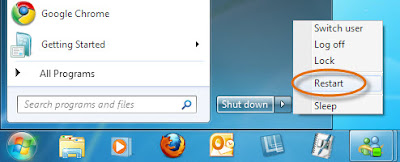
- Start pressing the F8 key once your Operating System become active.

- It will open the Advanced boot options on screen.

- Select Safe mode with networking > press Enter key.

For Windows 8/10
- From your screen, press power button and click Restart.

- From choose an option Window, select Troubleshoot option.

- Then click on the 'Advanced option.

- After that select Start-up setting option.

- Select Enable safe mode > press the Restart button.

- In order to enable Safe Mode With Networking, Press F5 key.

Method 2 : Deleting Exp.CVE-2018-8120 From Control Panel
Uninstall Exp.CVE-2018-8120 From Windows 7/Vista
- Open the start menu and then select Control panel.
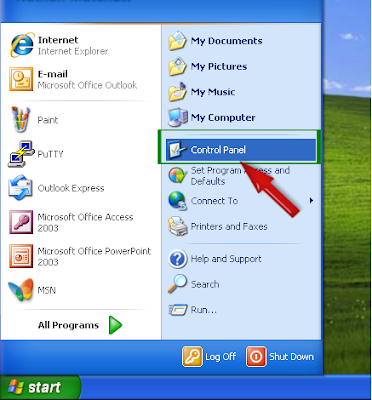
- From the Programs group, select remove a program option.

- Select Exp.CVE-2018-8120 related program > select uninstall/Change.
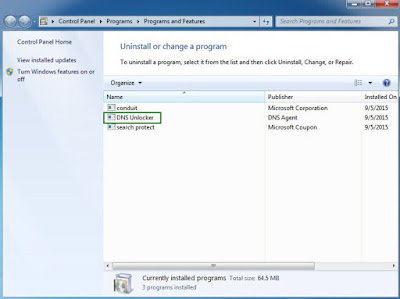
Uninstall Exp.CVE-2018-8120 From Windows 8
- Press the Win + R buttons at once to open the Run Box.

- In the Run box type Control panel and press Enter key.

- Click remove a program option under the Programs group.
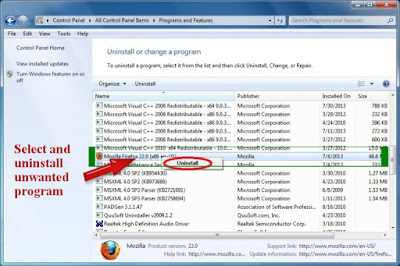
- From installed program select Exp.CVE-2018-8120 > click remove option.

Uninstall Exp.CVE-2018-8120 From Windows 10
- First click on Start button and select Setting option.

- From the settings menu, select the Operating System option.

- Now select 'Apps & features' option from the left panel.

- Select keyword} related program and Uninstall them.

Method 3 : Stop Related Process To Exp.CVE-2018-8120 From Task Manager
- Press the ALT+Ctrl+Del buttons at once.

- Then select the Task manager option from the opened list.
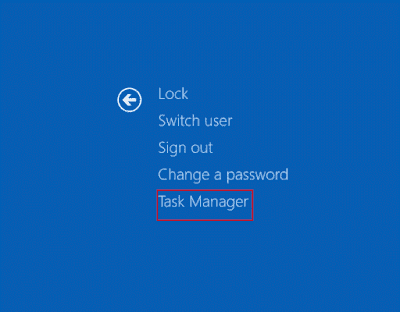
- Select malicious or Exp.CVE-2018-8120 related process.

- Finally click on the End Task button.
Method 4 : Uninstall Exp.CVE-2018-8120 From Registry Editor
- Press Win + R button together .

- It will open the Run window on screen.
- Type regedit > click on OK button.

- Search for Exp.CVE-2018-8120 related registry and remove them.
HKEY_LOCAL_MACHINESYSTEMCurrentControlSetServicesWpm
HKEY_CURRENT_USERSoftwareMicrosoftInternet ExplorerMain ‘Default_Page_URL’
HKEY_LOCAL_MachineSoftwareClassesWin32.TrojanDropper.Vidro
HKEY_CURRENT_USERSoftwareMicrosoftWindowsCurrentVersionRun ‘.exe’
HKCUSoftwareMicrosoftWindowsCurrentVersionInternet Settingsrandom
HKEY_LOCAL_MACHINESOFTWAREMicrosoftWindowsCurrentVersionrunrandom
HKEY_CURRENT_USERSoftwareMicrosoftWindowsCurrentVersionInternet Settings ‘CertificateRevocation’ = ’0
Method 5 : Uninstall unwanted extensions, add-ons, plug-ins from Firefox
Uninstall Exp.CVE-2018-8120 From Internet Explorer
- First start the Internet explorer browser.
- Click on the Gear icon from right-top corner.
- Click on 'Manage add-ons' > select Tool-bars and Extensions tab.
- Search for Exp.CVE-2018-8120 related add-ons > click on 'Disable'
- If add-on can't be deleted then click on remove and click Close.
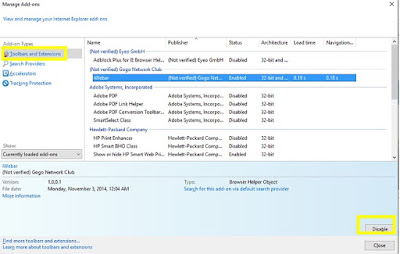
Uninstall Exp.CVE-2018-8120 From Mozilla Firefox
- Start Mozilla Firefox browser and go to menu
- You will get Add-ons Manager tab on your screen.
- In the add-on manager tab, select Extension or Add-on panel
- Select Exp.CVE-2018-8120 related add-on > click on remove button
- If the pop-up appear, click on Restart now option.

Uninstall Exp.CVE-2018-8120 From Google chrome
- Start the Google Chrome browser and click on menu button.
- Then click on the More tools and Extensions option
- Find out suspicious extension related to Exp.CVE-2018-8120
- Finally click on 'Recycle Bin' to Uninstall unwanted extension.

Uninstall Exp.CVE-2018-8120 From Microsoft Edge
Because there is no extension in the Microsoft Edge, hence you need to reset the browser settings to Uninstall Exp.CVE-2018-8120.
- Open Microsoft Edge on your Operating System.
- Go to right top corner > tap on More (…) icon > go to Settings.
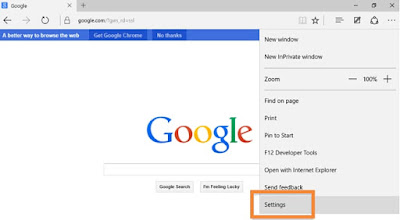
- Now select A specific page or pages from the Open option.
- Select Custom option > enter URL of your desired homepage.
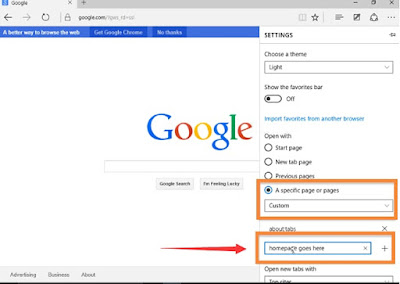

No comments:
Post a Comment